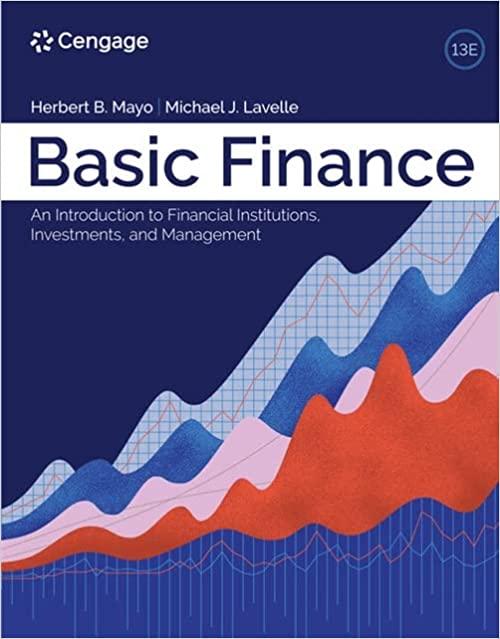
Question 4 (12 marks/Portfolio Management) The Triad family of mutual funds allows investors to split their money between several portfolios managed by Triad (none of the portfolios can be shorted). Portfolio C has an expected return of 10% and a standard deviation of return of 15%. Portfolio B has an expected return of 19% and a standard deviation of return of 25%. Portfolio A consists entirely of risk-free securities, and has a certain return of 4%. Your client is leaning towards investing his money entirely in portfolio C, since he is unwilling to take the higher risk associated with portfolio B, but wants a higher return than offered by portfolio A. (a) In your role as a Triad investment advisor, you suggest to him an alternative portfolio (consisting of a combination of A and B) that has the same standard deviation as portfolio C but a higher expected return. If he has $200,000 to invest, how much should he invest in B and how much in A? What is his expected return in this case? (4 marks) (b) Sketch a risk/return diagram to help explain to him why his combination of risk and return is improved by this option, and why his risk has not increased. Show all four portfolios on the diagram (i.e., the original three plus your suggestion). (4 marks) (c) Now assume that the correlation between portfolios B and C is 0. Draw a diagram that shows how considering all possible combinations of investments in the available portfolios improves the set of risk and return choices. Indicate the set of combinations that investors should prefer (e.g., those which minimize risk for a given level of return). (4 marks) Question 4 (12 marks/Portfolio Management) The Triad family of mutual funds allows investors to split their money between several portfolios managed by Triad (none of the portfolios can be shorted). Portfolio C has an expected return of 10% and a standard deviation of return of 15%. Portfolio B has an expected return of 19% and a standard deviation of return of 25%. Portfolio A consists entirely of risk-free securities, and has a certain return of 4%. Your client is leaning towards investing his money entirely in portfolio C, since he is unwilling to take the higher risk associated with portfolio B, but wants a higher return than offered by portfolio A. (a) In your role as a Triad investment advisor, you suggest to him an alternative portfolio (consisting of a combination of A and B) that has the same standard deviation as portfolio C but a higher expected return. If he has $200,000 to invest, how much should he invest in B and how much in A? What is his expected return in this case? (4 marks) (b) Sketch a risk/return diagram to help explain to him why his combination of risk and return is improved by this option, and why his risk has not increased. Show all four portfolios on the diagram (i.e., the original three plus your suggestion). (4 marks) (c) Now assume that the correlation between portfolios B and C is 0. Draw a diagram that shows how considering all possible combinations of investments in the available portfolios improves the set of risk and return choices. Indicate the set of combinations that investors should prefer (e.g., those which minimize risk for a given level of return). (4 marks)







